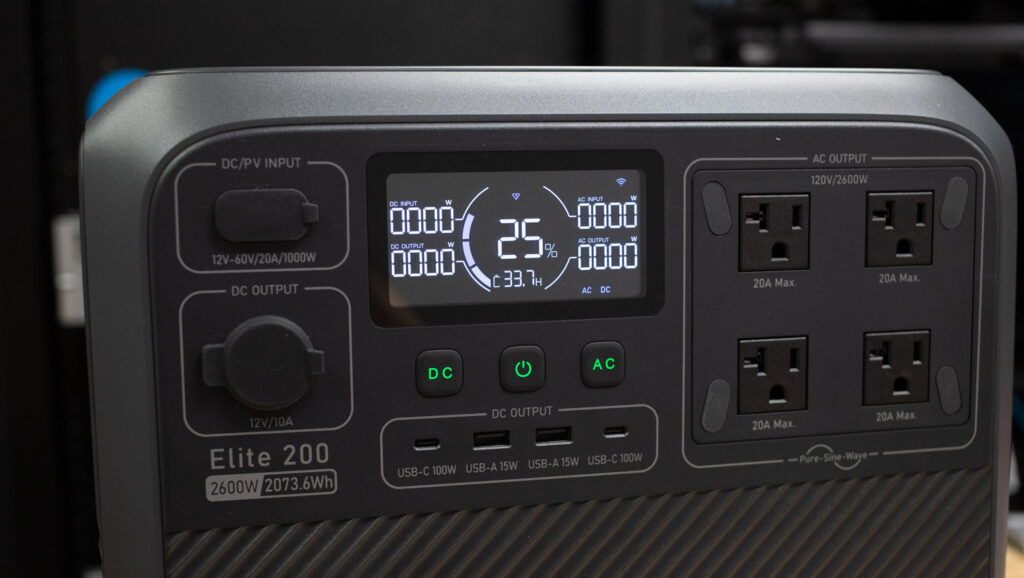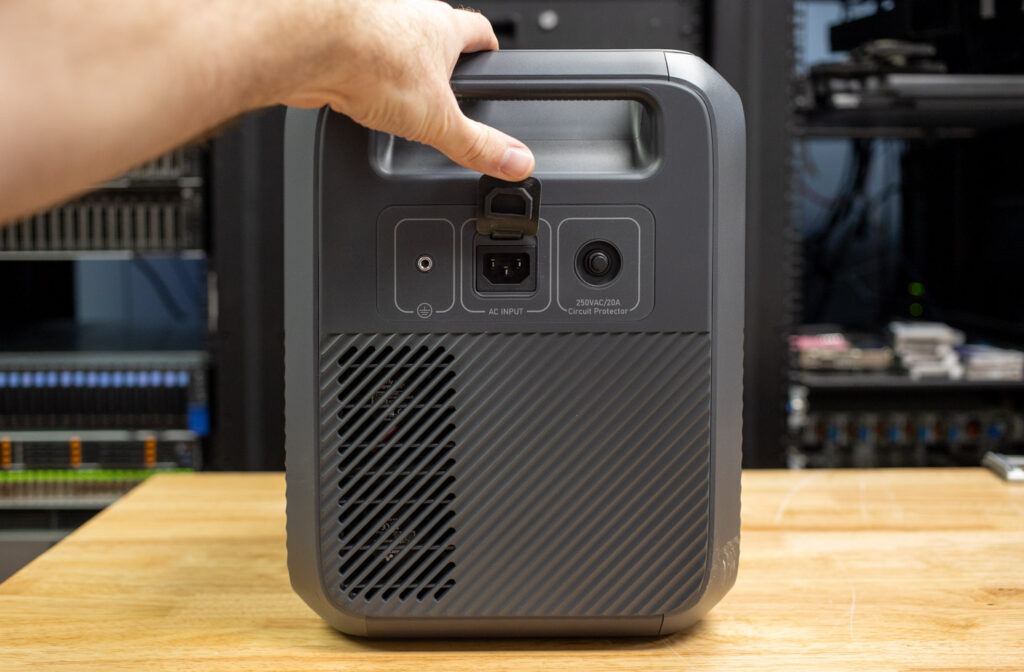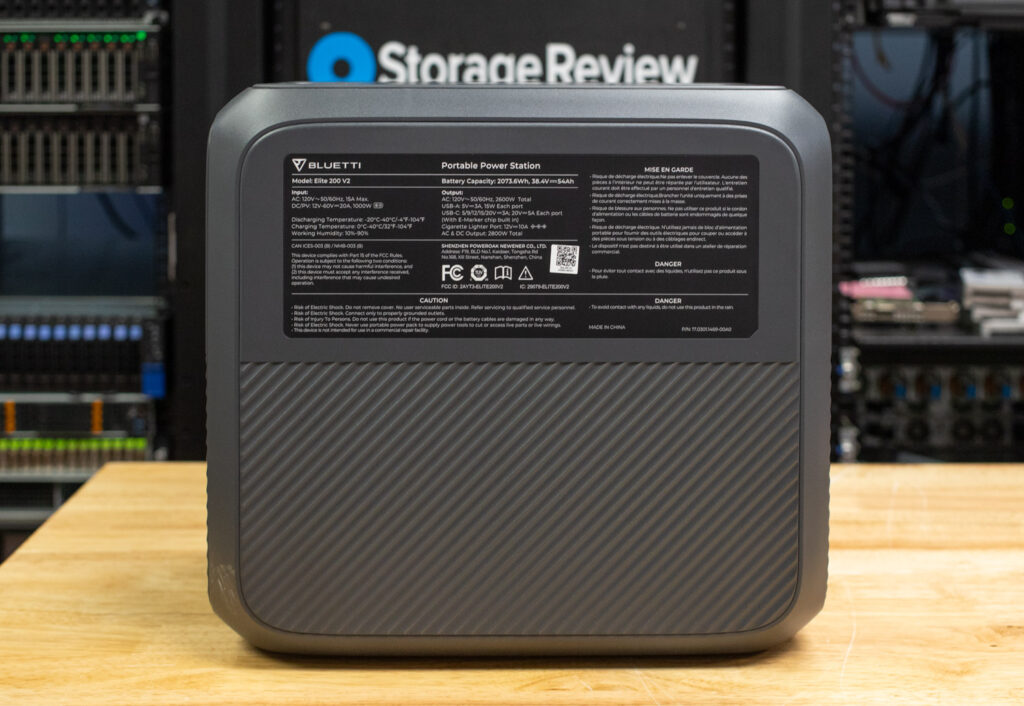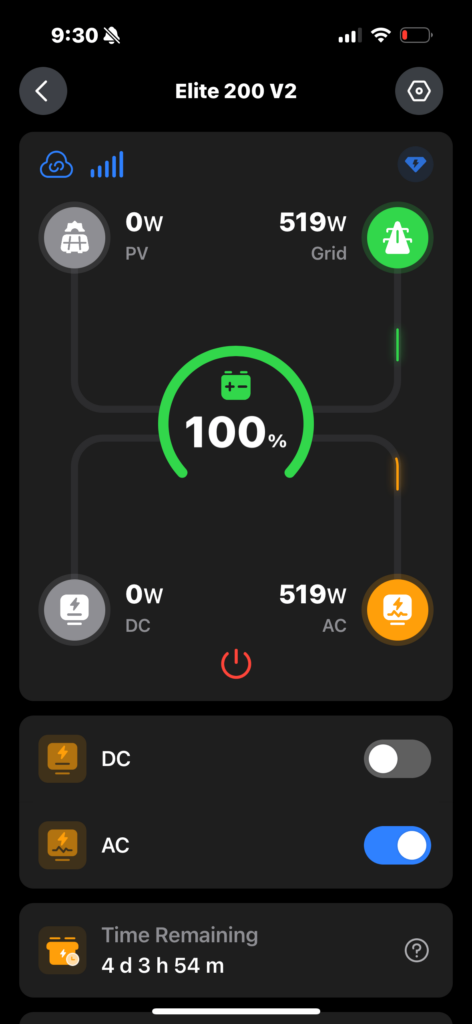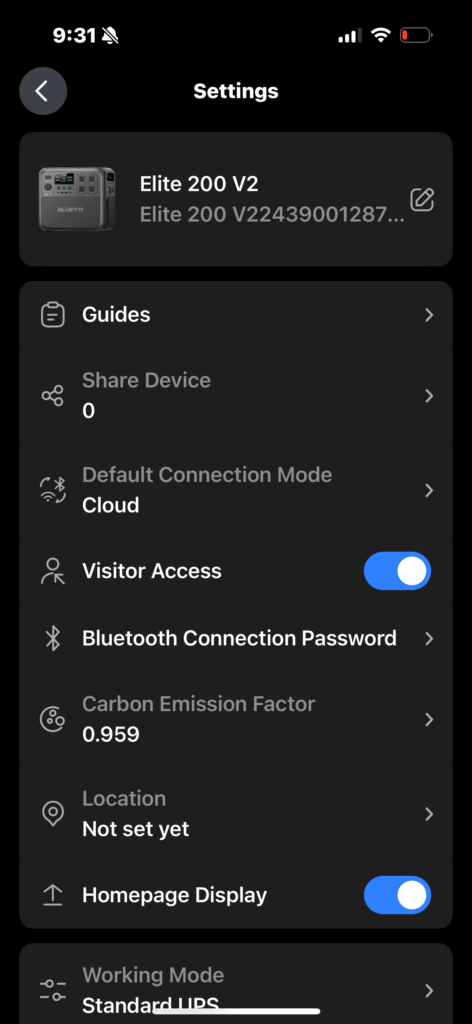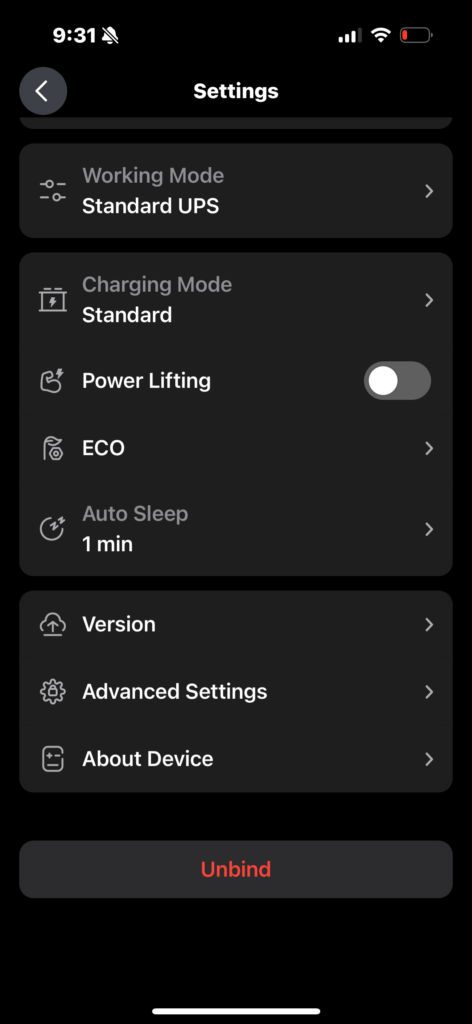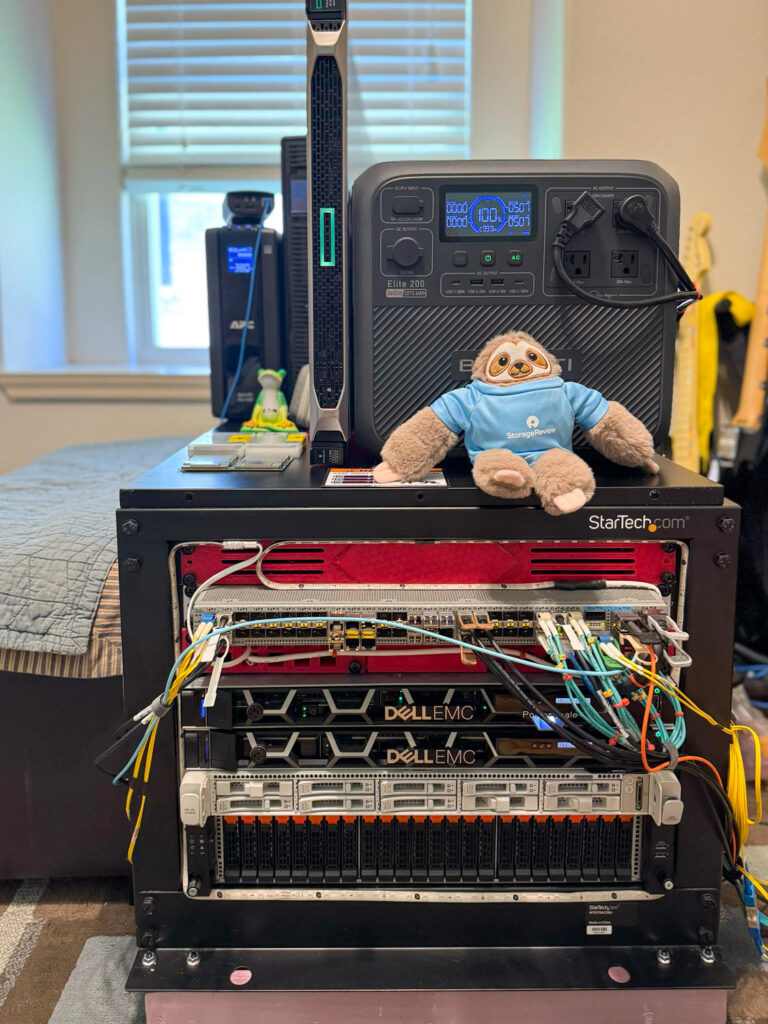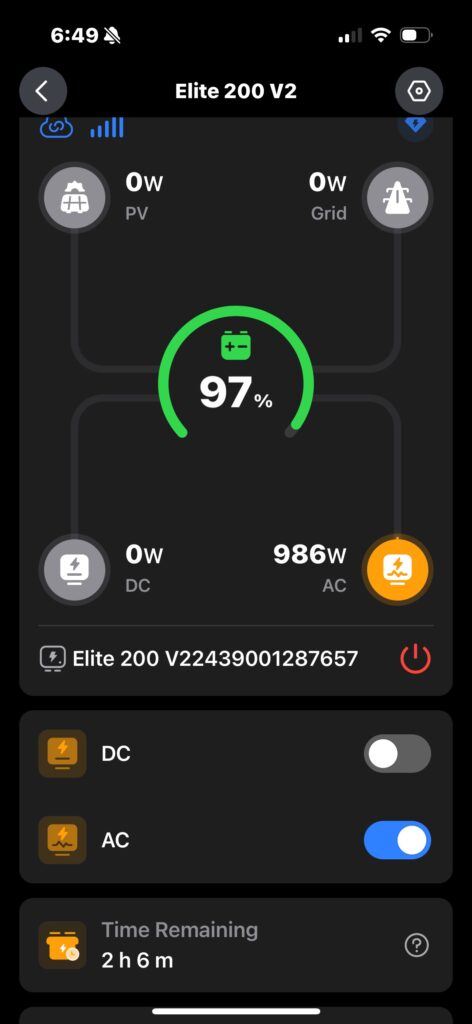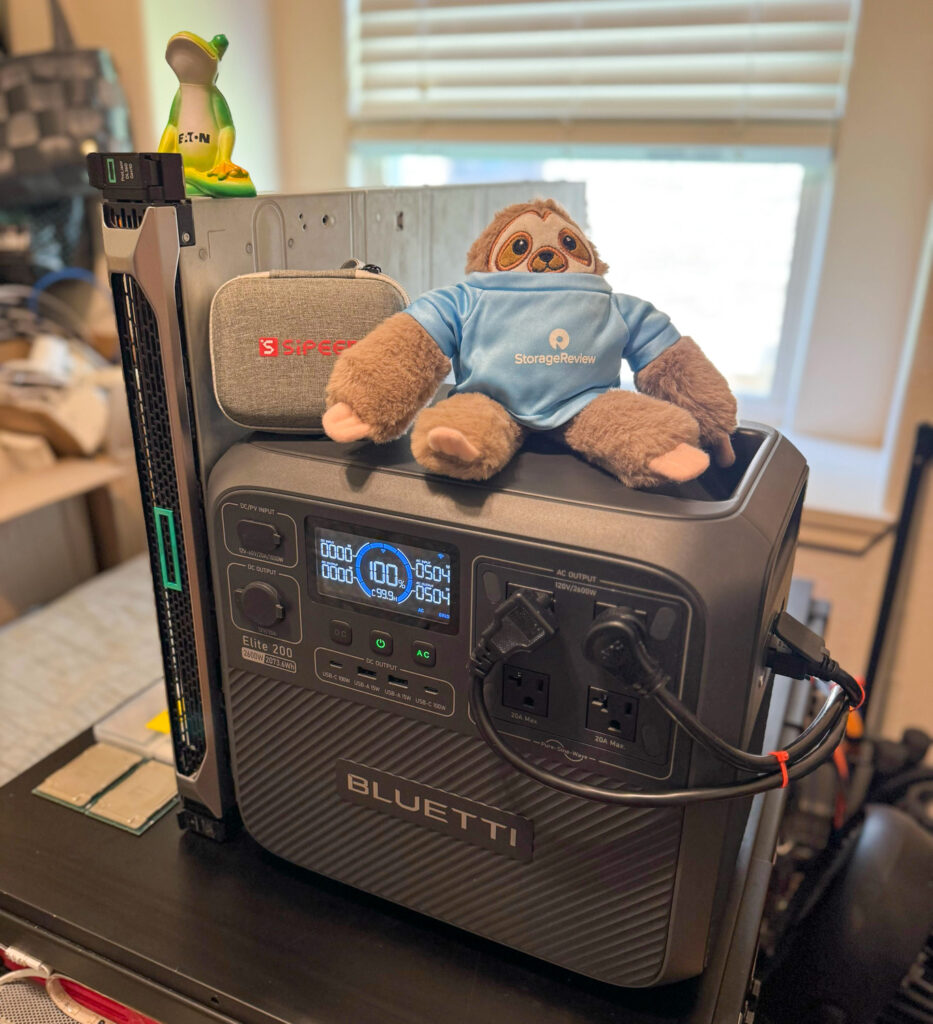Tested in a live home lab, the BLUETTI Elite 200 V2 delivers reliable UPS performance, fast charging, and off-grid power for under $1K.
We received the new BLUETTI Elite 200 V2 Portable Power Station—a sleek, no-fuss solution tailored for those who don’t need expansion batteries but still demand serious performance. This model strikes an impressive balance between capacity and portability, offering a 2073.6Wh LiFePO₄ battery, a 2600W pure sine wave inverter with a 3600W peak output, and nine output ports for essential gear.
The Elite 200 V2 is built for convenience and speed. Thanks to TurboBoost charging, it can hit 80% charge in just one hour, making it ideal for fast turnarounds. Solar charging isn’t left behind either—it can fully recharge in roughly 2.4 hours under optimal sun, which is excellent news for off-grid adventures.
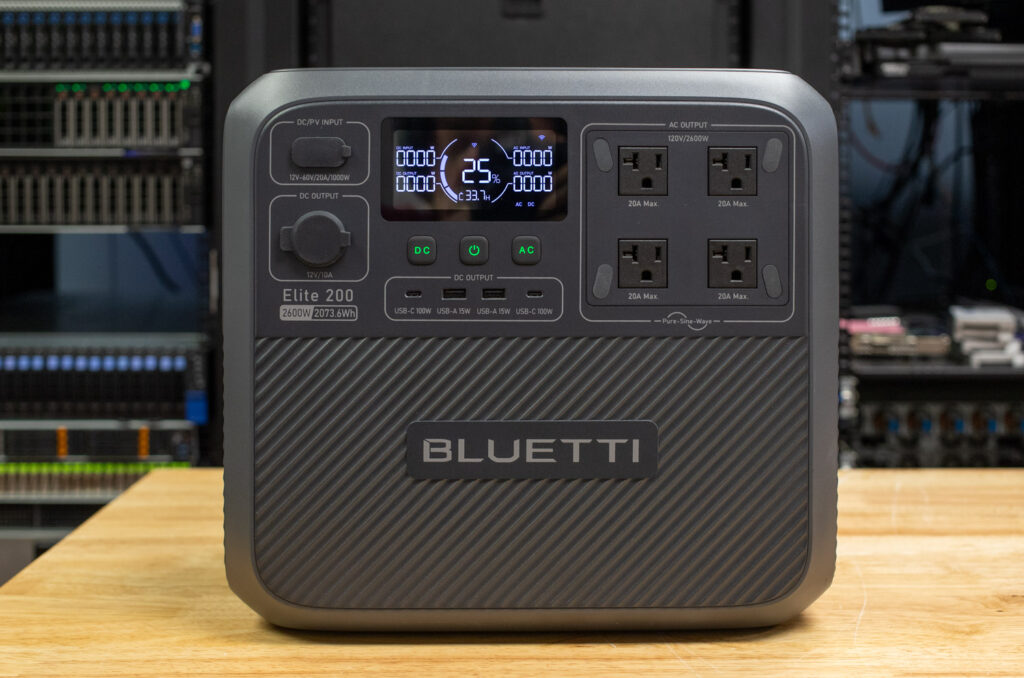
BLUETTI also claims 15ms UPS (uninterruptible power supply) switching, making it a worthy companion for home office setups or protecting mission-critical electronics. Compared to its predecessor, the V2 is 40% more compact, making it easier to stow in tight spots—whether in your RV, tucked beside your desk, or in the trunk of your car. Compact, reliable, and capable, the Elite 200 V2 is designed to power everything from outdoor getaways to emergency backup situations at home.
The unit sells for around $1,000; Amazon currently has a coupon (affiliate link) taking the price to $949.
Specifications: BLUETTI Elite 200 V2
| Specification | BLUETTI Elite 200 V2 |
|---|---|
| Battery Capacity | 2,073.6Wh (54 Ah) |
| Weight | 53.4 lbs (24.2 kg) |
| Dimensions | 13.78 × 9.84 × 12.74 in (35 × 25 × 32.36 cm) |
| USB-A Ports | 2 x USB-A (15W) |
| Cigarette Lighter Port | 1 x Cigarette Lighter Port |
| USB-C Ports | 2 x USB-C (100W) |
| AC Output | 4 x AC Output (2600W) |
| Solar Input | 1,000W Max., 12V to 60V, 20A Max. |
| AC Input | Up to 1,800W (Charging + Bypass) |
| Car Input | 96W (12V) / 192W (24V) |
| Battery Life Span | 17 Years |
| UPS Switch Time | 15ms |
| UPS Modes |
|
| Battery Chemistry | LiFePO4 |
| Warranty | 5-year warranty |
| App Control | Yes |
| Connectivity | WiFi / Bluetooth |
| Pass-through Charging | Yes |
| Storage Temperature | 14°F to 104°F / -10°C to 40°C |
| Operating Temperature | -4°F to 104°F / -20°C to 40°C |
Build & Design: BLUETTI Elite 200 V2
The BLUETTI Elite 200 V2 is a powerhouse of portable energy, meticulously engineered around a CNAS-certified LiFePO4 battery with a capacity of 2,073.6Wh. Weighing in at a solid 53.4 lbs (24.2 kg) and compactly designed at 13.78 × 9.84 × 12.74 inches (35 × 25 × 32.36 cm), it strikes a delicate balance between performance and portability. At its core is a pure sine wave inverter delivering a continuous 2,600W of clean, stable power—perfect for sensitive electronics—that can peak at 3,900W when heavier loads demand it. Built to handle real-world demands, the Elite 200 V2 is encased in a rugged, impact-resistant ABS shell, ensuring durability in both indoor and outdoor environments.
It also features BLUETTI’s proprietary BLUETOPUS AI-BMS, a sophisticated battery management system designed to safeguard against faults, enhance reliability, and extend battery life. Even under operation, it’s whisper-quiet at just 16 dB under small loads, making it ideal for off-grid setups, RVs, or quiet workstations. With a lifespan of over 6,000 charge cycles and an expected service life of 17 years, the Elite 200 V2 redefines long-term energy storage. BLUETTI backs this unit with a 5-year warranty.
The BLUETTI Elite 200 V2 puts all of its output options within easy reach, offering a thoughtfully organized and highly functional interface. On the 120V AC side, you’ll find four NEMA 5-20 outlets, each capable of supporting 20-amp keyed plugs, delivering a combined 2,600W at 120V/21.6A — perfect for powering everything from home appliances to professional equipment. The unit features two 100W max USB-C ports for charging devices, ideal for laptops, tablets, and other high-demand devices. It also includes two USB-A ports (5V/3A, 15W each) for more traditional peripherals. Additionally, a 12V/10A car outlet offers a reliable DC option for automotive accessories or portable coolers.
On the input side, the Elite 200 V2 supports multiple DC charging methods, providing flexibility wherever you are. The solar input accepts up to 1,000W (12V to 60V, 20A max), making it an excellent companion for off-grid adventures or emergency backup setups. It supports 96W via a 12V car input for vehicle charging or 192W via a 24V car input, ensuring convenient top-ups on the go. Also located on the front panel is a clear and intuitive LED display, which provides real-time feedback on power consumption, AC/DC input levels, and the overall system status. It’s a quick and easy way to monitor how much power you’re using, whether charging up or powering down.
Control is kept simple with these three user-friendly buttons:
- A Main Power button to power the unit on or off
- An AC button to activate or deactivate the AC inverter side
- A DC button to toggle the DC output functions
On the right side of the unit, you’ll find the AC input port, designed for fast and efficient recharging using the included AC charging cable. It supports a maximum input of up to 1,800W in charging + bypass-mode, allowing the unit to recharge while simultaneously delivering power to connected devices. For even faster performance, the BLUETTI Elite 200 V2 supports dual input, combining both AC and DC sources for a maximum input of up to 2,400W—ideal when time is of the essence.
Also located on this side is a grounding lug for enhanced electrical safety in specific scenarios and a resettable circuit breaker to protect the system from overloads. If tripped, it can be quickly and easily reset without needing tools. In addition, a robust carrying handle is positioned on each side of the unit, making it much easier to transport this heavy-duty power station wherever it’s needed. You’ll also notice ventilation grates along both sides, strategically placed to support airflow and keep the internal components cool during extended use.
The back of the unit is kept clean and minimal. Here, you’ll find the device data plate, which includes essential information such as the serial number, model details, and electrical specifications—handy for reference during setup or support.
The Elite 200 V2’s bottom is equipped with durable rubber feet, which provide stability while protecting the surfaces it rests on from scratches or scuffs.
BLUETTI Remote Management App
BLUETTI offers an app for remote management for both Apple and Android devices. This app allows users to monitor the BLUETTI Elite 200 V2 and configure settings, whether remotely or while next to the device, via WiFi or Bluetooth.
Users can view the system status on the app dashboard at a glance, much like the unit’s front panel. It displays input source from the grid or DC, shows which outputs are active, and shows the amount of power drawn from the AC or DC side. The app also allows users to turn the AC or DC output on or off, similar to the controls on the unit itself. When the unit runs on battery, the app provides a more accurate runtime estimate than shown in the image below.
In the BLUETTI app’s settings section, users can access various configuration options to customize their experience and device behavior. At the top of the screen, the app displays the device name and serial number for easy identification, especially when managing multiple units. Users can access helpful documentation below through the “Guides” section. The “Share Device” setting indicates how many people the unit has been shared with. Currently set to zero, this indicates that only the primary user has access. The “Default Connection Mode” is set to Cloud, meaning the app connects to the device via the internet, which is useful for full remote access. Bluetooth can still be used if preferred or if there’s no internet connection.
The “Visitor Access” toggle allows for temporary or limited control of the unit by others, which is helpful in shared spaces. There is a dedicated option to set a password for Bluetooth connections for added Bluetooth security. The “Carbon Emission Factor” allows users to track their environmental impact, and in this case, it is set to 0.959. Users can also assign a location to the device for better organization, although it hasn’t been set in this image. Finally, the “Homepage Display” toggle determines whether the unit appears on the app’s main dashboard, and it is currently turned on for easy visibility and control.
This unit gives users deeper control over device operation. The Working Mode is currently set to Standard UPS, allowing the power station to function as an uninterruptible power supply by automatically switching to battery power during outages. Other available working modes include PV Priority UPS, Time Control UPS, and a Customized mode, giving users flexibility based on their specific energy management needs. The Charging Mode is listed as Standard, but it can be adjusted to Silent or Turbo, depending on the power source and the user’s preference for efficiency or noise reduction. Power Lifting can be optionally enabled, allowing the device to support high-wattage appliances beyond its rated capacity, up to 3600W.
The ECO mode can be toggled on either AC or DC outputs to reduce idle power usage, improving efficiency during low-load scenarios. The Auto Sleep timer is set to one minute, conserving energy by turning off the display or entering a low-power state when not in use. Additional sections include Version, which provides firmware information and update options, and Advanced Settings, which offer granular controls such as max grid input, AC output frequency, system switch recovery, grid self-adaption, and DC input source. The About Device section includes hardware specifications and connection details, such as Bluetooth signal strength and WiFi information, for troubleshooting. At the bottom, the Unbind button allows users to disconnect the unit from their account, which is useful when resetting the device or transferring ownership.
Overall, the BLUETTI app is well-designed, easy to navigate, and makes it simple to manage and fine-tune the system based on specific needs. This is especially helpful for users who may own multiple units across different locations, offering centralized and intuitive control.
Power Testing
- Discharge & Recharge test: The BLUETTI Elite 200 V2 has a battery capacity of 2,073.6Wh, and during our testing, it demonstrated solid energy efficiency. The unit discharged 1.91 kWh, which is slightly less than its rated capacity, reflecting the fact that the inverter introduces some loss, but it is minimal. For recharging, it required 2.44kWh, indicating a moderate energy input to replenish the battery. These results demonstrate the unit’s ability to manage power output and input efficiently, ensuring minimal waste while providing reliable and consistent energy to various devices.
- Real World UPS Test: The BLUETTI Elite 200 V2 was deployed in a compact home lab rack environment to evaluate its performance under realistic conditions. The rack housed a mix of enterprise-grade and prosumer hardware, including a Dell PowerEdge R640 and R240, an HPE ProLiant DL360 Gen10, and a Gigabyte chassis. Networking gear included a Cisco data center switch and a 16-port business-class PoE switch.
During the test, we performed multiple unplugging and re-plugging cycles of the battery with all systems powered on—some idle and others actively running workloads such as NAS operations or hypervisors hosting virtual machines. The BLUETTI Elite 200 V2 managed these switchovers seamlessly. There were no reboots, instability, or other anomalies across the connected systems.
Power draw during the test fluctuated between 986W and 1.1kW, providing a solid mid-load scenario for the UPS. Despite the sustained load and repeated transitions between power sources, the unit remained stable and responsive, confirming its viability for small lab or edge server deployments.
Conclusion
The BLUETTI Elite 200 V2 is typically marketed as a portable power station for off-grid adventures, camping trips, or emergency use. Still, it has become a surprisingly capable and affordable solution for home labs where uptime matters. With over 2,000Wh of capacity and a fast 15ms UPS switchover, it does more than keep the lights on. It’s kept my core lab infrastructure fully operational during outages, including my core switching, NAS, and hypervisors—everything stayed online, no interruptions.
What stands out is the value. Compared to traditional UPS systems of similar capacity, the Elite 200 V2 is significantly more affordable. And where many consumer-grade UPS units rely on aging lead-acid batteries and inefficient inverters, this one delivers clean, pure sine wave output using reliable lithium-iron-phosphate (LiFePO) battery technology. This wasn’t just about shutting things down smoothly. The BLUETTI Elite 200 V2 kept everything operational throughout the entire outage. It’s not merely a backup solution; it provides true resilience to the home lab.
The built-in battery health monitoring and reporting are just another layer of peace of mind, something most budget UPS options don’t even offer, and for under $1000.
Elite 200 V2 at Amazon (affiliate link)
Engage with StorageReview
Newsletter | YouTube | Podcast iTunes/Spotify | Instagram | Twitter | TikTok | RSS Feed

